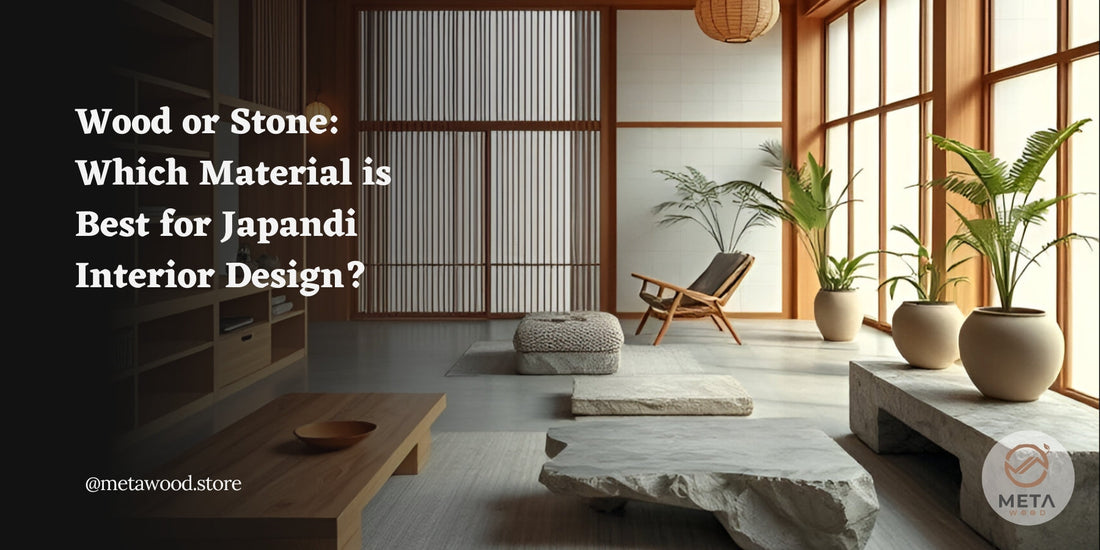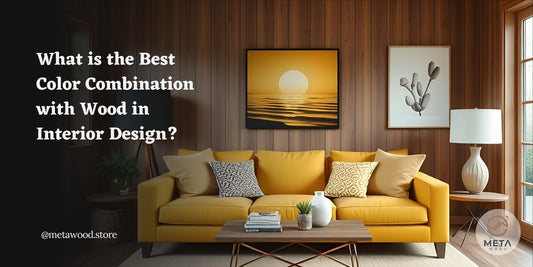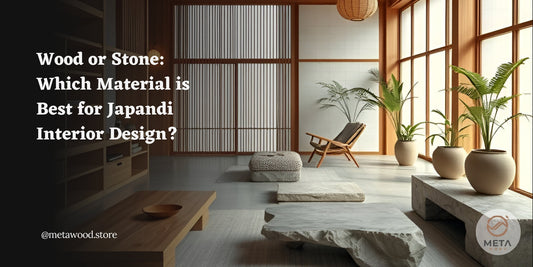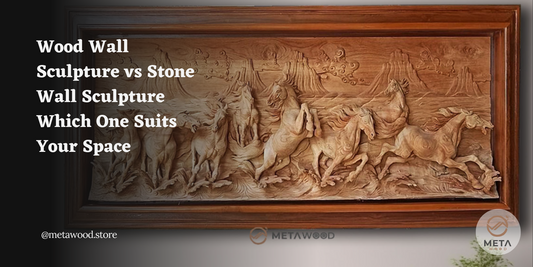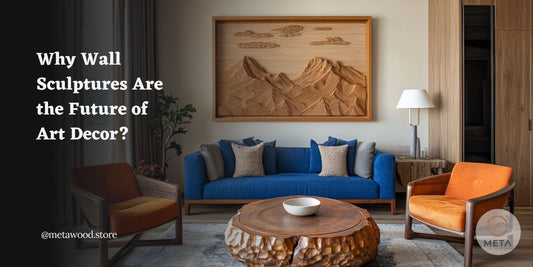Japandi interior design uniquely blends Japanese Zen minimalism with Scandinavian coziness and functionality, focusing on creating harmonious, serene, and inviting spaces through simplicity, functionality, natural materials like wood and stone for warmth and texture, and a balanced palette of neutral tones and natural textures for a calm aesthetic.
Characteristics of Japandi Interior Design

a. Common materials used in Japandi
Natural materials such as wood, natural stone, linen fabrics, and minimalistic metal accents are essential in Japandi interior design. These materials contribute to a sense of tranquility and a connection to nature.
b. Core design principles
Neutral colors, natural lighting, and open spaces create an airy and tranquil environment. This approach allows light to flow freely, making the space feel warm and welcoming.
c. Defining features of Japandi style
The combination of natural and warm elements (wood, soft textiles) with rough yet elegant textures (stone, metal) creates a visually balanced look. This contrast adds depth and sophistication to the space.
d. What to avoid in Japandi interior design?
Over-decoration and excessive use of bold colors can disrupt the calm aesthetic. Additionally, synthetic or plastic materials should be avoided as they interfere with the natural harmony of the space.
Considering these characteristics, wood and stone are the primary materials used in Japandi interiors. But Which Material is Best for Japandi Interior Design?
The Role of Wood in Japandi Interior Design
Wood in Japandi interior plays a crucial role in creating a warm and balanced atmosphere. It enhances the minimalist yet cozy aesthetics that define this design style.
1. Advantages of Wood as a Primary Material
a. Timeless and durable – Wood is a long-lasting material that aligns with Japandi’s focus on functionality and sustainability.
b. Versatile in design – It complements various decor styles and can be used in furniture, floors, and accents.
c. Brings a natural touch – Wood relief carving, wall relief sculpture, and wooden furniture add depth and warmth to Japandi spaces.
2. Wood Wall Art & Sculptures in Japandi
a. Flexible & artistic – Wooden wall sculpture pieces are highly adaptable to different themes, allowing creativity in decoration.
b. Enhances natural texture – The organic grain of wood adds a tactile quality to the space.
c. Comes in a range of natural tones – Various wood finishes maintain a harmonious and cohesive interior look.
The Role of Stone in Japandi Interior Design
Stone in Japandi interior is used to create an elegant, solid, and natural feel. It introduces texture and contrast, enhancing the overall aesthetic.
1. Advantages of Stone as a Primary Material
a. Highly durable & strong – Stone is resistant to damage and decay, making it a lasting choice.
b. Provides a cool and sophisticated ambiance – It enhances the minimalist aesthetic with its refined texture.
c. Suitable for decorative elements – Common applications include walls, flooring, and countertops.
2. Stone Wall Art & Sculptures in Japandi
a. Adds unique character – The textured surfaces of wall relief sculpture made from stone create a distinct look.
b. Introduces subtle contrast – Stone elements bring balance to minimalist spaces without overpowering them.
c. Ideal for specific areas – Stone accents are commonly used in bathrooms, kitchens, and living areas.
Wood vs. Stone: Which is Best for Japandi Interior Design?
While both wood and stone offer distinct qualities like flexibility and warmth for wood, and durability and texture for stone, wood emerges as the superior choice for Japandi interior design due to its ability to create a cozier and warmer atmosphere, align with the philosophy of natural simplicity and functionality, and its ease of integration into various interior elements such as wood relief carving and furniture, making it a key material in enhancing Japandi design alongside considerations of how both wood and stone materials can be applied in these interiors. Examples of Wood and Stone Applications in Japandi Interiors :
1. Wood Wall Sculptures
Add artistic detail while maintaining simplicity. These pieces create subtle focal points without overwhelming the space, making them perfect for Japandi interiors. With their organic shapes and natural textures, wood wall sculptures blend seamlessly with minimalist aesthetics while adding warmth and depth to the walls.
2. Stone Wall Sculpture

Introduces natural accents and elegant contrast to the decor. The rough yet refined texture of stone complements the smooth, warm tones of wood, creating a harmonious balance. Stone wall relief sculptures can enhance a feature wall, adding depth and a sense of permanence to the overall design.
3. Wood and stone furniture

Enhance the Japandi aesthetic with natural materials. Wooden furniture, such as low-profile tables and shelves, provides warmth and versatility, while stone elements, like countertops or side tables, bring stability and sophistication. The combination of these materials maintains the balance between functionality and aesthetic harmony.
4. Visual references and inspiration

Showcase both materials in various Japandi interiors for better design ideas. From wooden slat partitions to stone accent walls, the fusion of these elements illustrates how they can coexist beautifully. These applications help homeowners visualize how to integrate wood and stone into their spaces while staying true to the essence of Japandi interior design.
Final Thoughts
Japandi interior design focuses on balancing warmth with minimalism by using natural materials. While both wood and stone have their advantages, wood is more versatile, timeless, and best suited for most Japandi interior elements. Stone in Japandi Interior still plays an important role as an accent material, particularly for surfaces and decorative elements.
Ultimately, the choice between wood and stone depends on personal preferences, functional needs, and the overall desired aesthetic of the space. If you are looking for high-quality wood wall sculpture, wood relief carving, or wall relief sculpture for Japandi interiors, Metawood offers a wide collection. You can also request custom designs to perfectly match your interior style!

